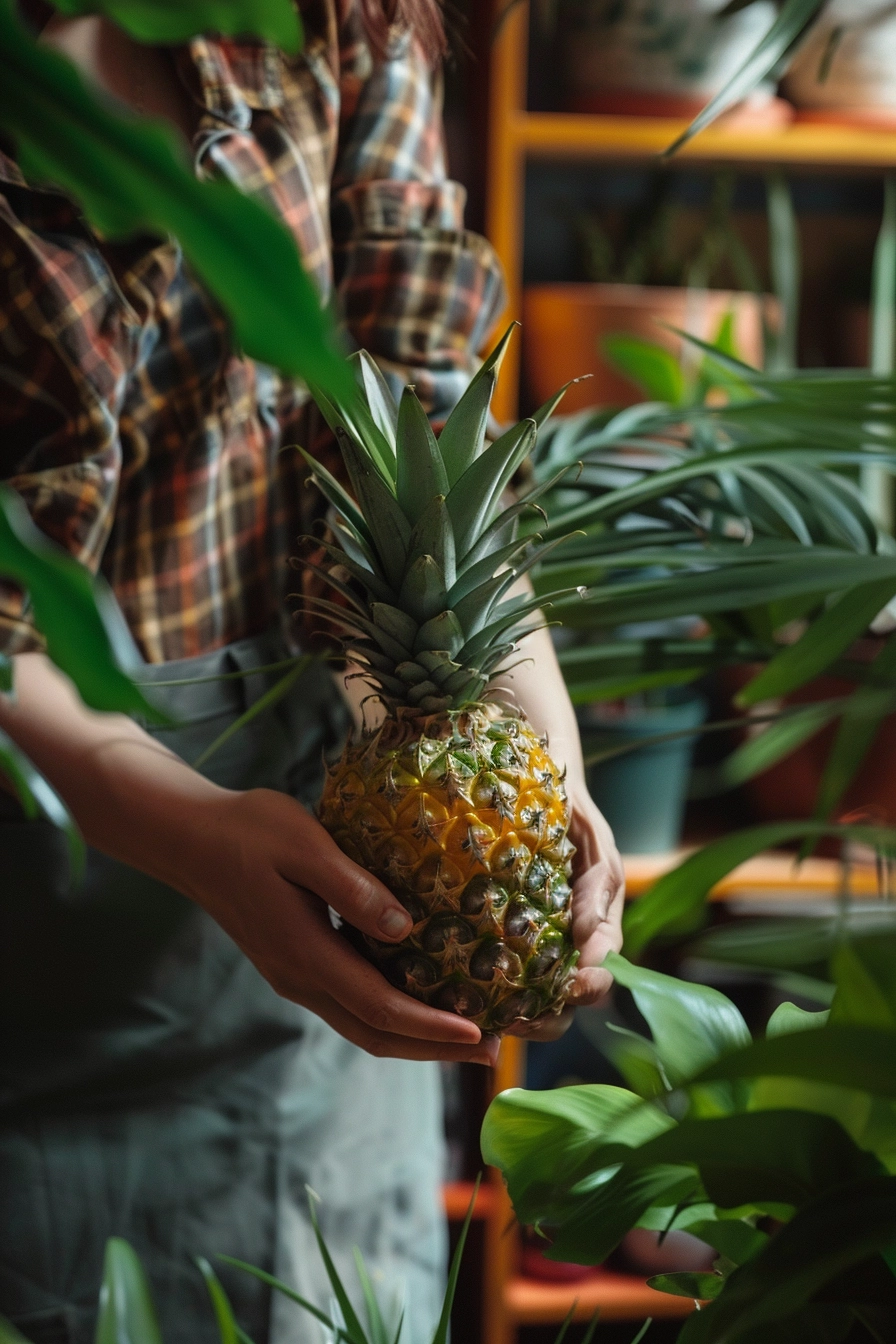Are you a fan of indoor gardening? If so, why not try growing your very own indoor pineapple plant? Not only will it add a touch of tropical elegance to your home, but it will also provide you with the satisfaction of growing a fruit-bearing plant indoors. In this article, I will guide you through the process of cultivating and caring for an indoor pineapple plant, so you can enjoy the beauty and taste of fresh pineapple right at home.
Key Takeaways:
- Growing pineapples indoors is possible by starting with a ripe pineapple from the store.
- Plant the pineapple top in well-draining soil and provide bright indirect light.
- Water the plant when the soil is dry and fertilize monthly with organic fertilizer.
- Proper care includes monitoring soil moisture, protecting from freezing temperatures, and encouraging blooming with ethylene gas.
- While it may take a few years for the plant to produce fruit, the lush foliage is a beautiful addition to your indoor garden.
Growing Tips for Indoor Pineapple Plants
When it comes to cultivating indoor fruit plants, pineapple plants are a popular choice for tropical plant cultivation indoors. With their unique appearance and delicious fruit, they bring a touch of the tropics into your home. To ensure the success of your indoor pineapple plant, it’s important to follow some indoor gardening techniques and indoor plant care essentials.
First and foremost, indoor pineapple plants thrive in full sun, so it’s crucial to place them in a sunny windowsill that receives at least 6 to 8 hours of sunlight each day. If your windowsill doesn’t provide enough natural sunlight, you can supplement it with artificial grow lights to meet the plant’s light requirements.
Pineapples also have specific temperature preferences. They thrive in temperatures ranging from 65 to 95 degrees Fahrenheit, making them suitable for average home humidity levels. This means they can tolerate the conditions found in most indoor environments.
In terms of watering, indoor pineapple plants require regular watering to keep the soil moist. However, it’s essential to avoid overwatering, as this can lead to root rot. Aim to water the plant when the top inch of soil feels dry to the touch. This will ensure that the plant gets adequate water without becoming waterlogged.
Fertilization is another important aspect of indoor pineapple plant care. Use a balanced organic fertilizer and apply it once a month during the growing season to provide the necessary nutrients for healthy growth and fruit development.
Pruning is primarily done for aesthetic purposes, to maintain the plant’s shape and appearance. To prune your indoor pineapple plant, simply cut down the longer leaves to keep the plant compact and visually appealing.
After about a year of growth, your indoor pineapple plant may outgrow its current container. When this happens, it’s time to repot the plant into a larger container. This will provide the plant with more room for root development and support its continued growth.
Caring for Indoor Pineapple Plants
When it comes to caring for indoor pineapple plants, there are a few key considerations to keep in mind. By following these indoor gardening tips, you’ll ensure that your pineapple plant thrives and stays healthy.
Proper Watering Techniques
One of the most important aspects of pineapple plant care is watering. It’s crucial to keep the soil lightly moist at all times. However, be cautious not to overwater as pineapples are sensitive to root rot. Allow the top inch of soil to dry out before watering again, and ensure that the potting mix is well-draining.
Protection from Freezing Temperatures
While pineapple plants can tolerate warmer indoor temperatures, they cannot tolerate freezing temperatures. It’s essential to bring your plant indoors before the first frost of fall to protect it from the cold. Ensure that your pineapple plant is in a location where it won’t be exposed to drafts or low temperatures.
Avoid Overfeeding
When caring for indoor pineapple plants, it’s important not to overfeed them. Overfeeding can result in slower growth and may even harm the plant. Use a balanced organic fertilizer and follow the manufacturer’s instructions for application. Regular fertilization once a month during the growing season is usually sufficient.
Understanding Growth Patterns
Pineapple plants typically do most of their growing during the warm seasons. They may slow down during periods of shorter daylight, but this is normal. Be patient and maintain consistent care for your plant, and it will continue to thrive.
Encouraging Bloom and Fruit Ripening
If your indoor pineapple plant hasn’t bloomed on its own, you can try using a natural method to encourage the process. Exposing the plant to ethylene gas by enclosing it with overripe apples may help stimulate blooming. Once the plant flowers, it takes several months for the fruit to grow and ripen.
By following these caring tips, you’ll be on your way to successfully cultivating an indoor pineapple plant. With a bit of patience and attention to detail, you can enjoy the beauty and reward of growing your own pineapple at home.

Conclusion
Growing an indoor pineapple plant can be a rewarding and exciting experience for any indoor gardener. With the right care and attention, you can successfully cultivate a pineapple plant in the comfort of your home, adding a touch of the tropics to your living space.
By following these indoor gardening tips and techniques for growing pineapple plants indoors, you can ensure that your plant thrives. Remember to provide your pineapple plant with plenty of bright indirect light and keep the soil lightly moist to prevent overwatering.
Although it may take some time for your indoor pineapple plant to produce fruit, the lush foliage and vibrant leaves make it a stunning addition to any indoor garden. As you care for your pineapple plant, enjoy the process and the satisfaction of growing your own pineapple at home.

